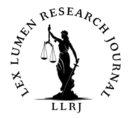Written By Syed Suhaib,
November 2024
Introduction
The arc of the moral universe is long, but it bends towards justice, a quote by Martin Luther King Jr. is a reminder of the enduring struggle for equality and recognition faced by marginalized communities, including the queer community in India. In the chronicles of India’s legal history, the journey towards the recognition of the queer community has been a nuanced narrative, weaving through landmark judgements, legislative interventions, and societal perceptions. The decision of the Hon’ble Supreme Court in Supriyo v/s Union of India[1] via a majority of 3:2 refused to recognise same-sex marriage due to the absence of any statute. The court articulated that it is impermissible to interpolate language into the extant provisions of the Special Marriage Act 1954, which explicitly acknowledges union between individuals of the male and female gender. Justice Ravinder Bhat opined that the court cannot assert any power beyond its ambit in the absence of any statute, the court was unable to grant same-sex marriage rights because marriage is not a fundamental right[2]. However, the case was not a lost cause because the Apex Court provided the guidelines for both the Central and State authorities to formulate legislation pertaining to the rights of queer individuals, thereby making this a landmark judgment for the queer community in India. These guidelines encompassed adoption rights, equitable treatment, and safeguards against police harassment[3]. The arduous journey of the queer communities towards recognition may be perceived as a tragic reflection of the contemporary legal framework. The extant legal framework, regrettably, has proven inadequate in elevating the status of the queer community, thereby casting a dark light upon the legitimacy of their struggle for recognition. Nevertheless, the ardent contemporary struggle towards recognition has been adequately favourable for the queer community towards their unequivocal legal recognition. It is imperative to consider that, the struggle for recognition of queer individuals transcends beyond the legal framework and involves more intricate societal perception which requires reform. The queer community in India are thriving without separate legislation which makes them prone to discrimination, thereby justifying their struggle towards legal recognition. The struggle towards legal recognition by queer individuals involves an intricate timeline which has been rambling on for more than 4 decades, inclusive of the struggle towards legal recognition. The timeline of queer recognition involves more intricate nuances which are exclusive of the legal endeavours. It involves the confrontation of the primitive societal perceptions which paved the way towards subsequent recognition of queer individuals within the contemporary Indian society.
Synopsis of the History of the Queer Community in Indian Society
The recognition of queer community was uplifted after the Navtej Johar judgement[4] which has proven to be the epitome of progression towards the people of the queer community. However, the prevailing societal sentiment at the time remained unsupportive, thereby creating an environment wherein members of the queer community found it challenging to experience a sense of inclusion within the society because the queer issue was viewed as a construct associated with the more affluent strata of society, often dismissed as a flawed importation from Western cultures[5]. The progression of the queer community towards recognition and attaining their rights is commonly believed to have originated with the 2018 Supreme Court judgment. In a pivotal decision by a five-judge constitutional bench, invalidated Section 377 of the Indian Penal Code. While this judgment marked a significant milestone in favour of the queer community, the journey can be traced back to the 1970s when Shakuntala Devi authored her book titled “The World of Homosexuality”[6]. This publication is regarded as the initial candid discussion within the queer community in India. Within the pages of this book, Devi has extensively explored the status of homosexuality in India. The book also featured interviews with two Indian gay men who shared their experiences of being homosexual in India. In the context of homosexuality, India has accorded recognition to a distinct gender category known as ‘Transgenders’, often colloquially referred to as ‘Hijadas’. Their recognition can be attributed to the 2014 and 2019 legislative bills. The 2014 bill introduced reservations for the transgender and the 2019 bill[7], introduced by a private member, Supriya Sule, underscored the significance of addressing the shortcomings of the landmark 2018 judgment which struck down Section 377 of the Indian Penal Code. It emphasised that the judgment alone was insufficient in ensuring comprehensive rights for the queer community due to the absence of specific legislative provisions. Notably, the legal framework in India provides transgender individuals rights equivalent to those of males and females. The law even upholds the right of citizens to determine their sexual orientation. Consequently, if a transgender individual identifies as a female, they cannot be denied the corresponding legal recognition and rights.
Towards Recognition
It is imperative to append that the crux of granting rights to the queer community falls within the purview of constitutional morality as opposed to societal morality[8]. One of the arguments from the same-sex marriage case which arrayed against the union of queer individuals was centred upon the ambiguity in sexual orientations, thereby rendering the societal apprehension of the purview of the queer community. The promulgation of statutes and landmark judicial decisions has proven inadequately efficacious, due to lack of implementation and societal awareness[9]. Even Justice S Muralidhar opined that the petitioners fell short in the oral arguments in the same-sex marriage case. However, the case was not an unequivocal loss, as the directives issued by the bench decidedly favoured the queer community. The separate legislative provisions will be robust resistance to the conventional view of queer community held by a considerable number of people in the contemporary Indian society. The favourable developments for the queer community in India encompass the nullification of discriminatory colonial-era policies, the 2014 bill addressing transgender reservations including the 2019 bill, and the recognition of cohabitation through live-in relationships. The organisations have also aided in the elevation of the queer community. These organisations including either regional or national have aided in dismembering the conventional view of the queer community by providing a platform to showcase the world of homosexuals, an empirical idea enunciated in the book of Shakuntala Devi. These organisations provide societal groundwork through social platforms and panels to elevate the recognition of queer individuals within Indian society.
Conclusion
The contemporary legal framework which was ostensibly designed to safeguard the rights and dignity of all citizens, appears to falter in its efficacy when confronted with the specific challenges faced by the queer community. An imperative perspective was enunciated by Aristotle in the book of Nichomachen Ethics[10] which encourages an analysis of the fundamental principles that underpin justice, and whether the contemporary legal framework aligns with the ethical imperatives of equality and fairness which is prevailing in the society needs to be considered[11]. Irrespective of the setbacks, the judicial system has promoted separate legislation favourably. The prevalence of Constitutional morality, as opposed to societal morality, has been a consistently significant factor that has contributed towards the recognition of queer community. The transformative role of organisations, both regional and national, cannot be taken out of proportion, as they contribute towards ameliorating biased societal perceptions and promoting recognition for queer individuals. Efforts like these have proven substantive to promote the era of homosexuality, where people from different sexual orientations possess the same liberty as any other person. The inclusion of queer individuals into the legal and other spheres implies a pragmatic approach towards fairness and equality with a liberal perspective, which is having a considerable impact on the pursuit of recognition by the queer community in India. The pursuit of recognition implies the struggle of the queer community towards securing fundamental rights which consequently may lead to a statutory recognition of homosexuals in India.
[2]“Marriage Equality Case: Conclusions & Directions of Supreme Court Judgments”, Live Law, 2023. https://www.livelaw.in/top-stories/marriage-equality-case-conclusions-directions-of-supreme-court-judgments-240529
[3] “Same-sex marriage verdict: What LGBTQ community got and what it didn’t”, Economic Time, 2023. https://economictimes.indiatimes.com/news/india/same-sex-marriage-verdict-what-lgbtq-community-got-and-what-it-didnt/articleshow/104491992.cms?from=mdr
[4] Writ Petition (Criminal) No. 121 of 2018.
[5] “Is Homosexuality a Western concept”, WILPF, 2013. https://www.wilpf.org/is-homosexuality-a-western-concept/
[6] Shakuntala Devi, The World of Homosexuals (Vikas Publishing House, 1977).
[7] Transgender Persons Protection of Rights Bill 2019 https://prsindia.org/billtrack/the-transgender-persons-protection-of-rights-bill-2019
[8] Z.M Yacoob, “Societal Morality to Constitutional Morality”, The Hindu, 2011. https://www.thehindu.com/opinion/lead/societal-morality-to-constitutional-morality/article2758601.ece
[9] Srivastava, Sumit Saurabh. “Disciplining the ‘Desire’: ‘Straight’ State and LGBT Activism in India”, Sociological Bulletin, vol. 63, no. 3, 2014, pp. 368–85. JSTOR, http://www.jstor.org/stable/43854980
[10]Aristotle’s Nicomachean Ethics. University of Chicago Press, 2011.


